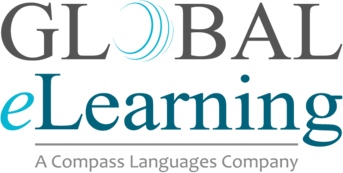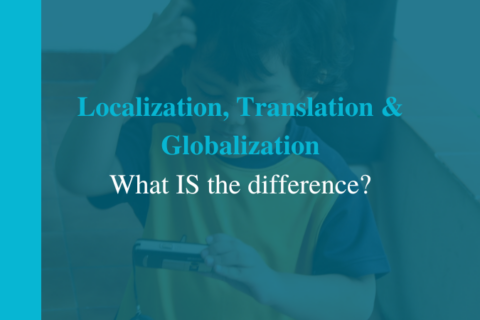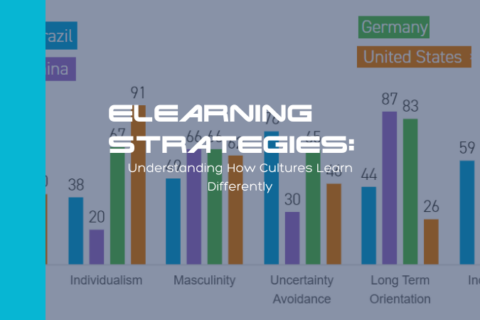What is “Best in Class” Localization Services for L&D?
Five years ago, we set out to become the very best in localization services for the Learning & Development (L&D) industry. At the time, our team believed that Best in Class localizations services must include: an efficient process, competent linguists, a resourceful audio/video studio, and an engineering department that could manage the industry’s many technologies. Check, check, and check.
Fast-forward into 2021 and the accomplishment of thousands of delivered projects, we now enjoy a clearer picture of how clients grade performance and what distinguishing qualities a Best In Class Localization provider should bring to the industry. Surprisingly, some rather fundamental elements seem to influence greatness more than we thought in earlier days. No doubt, the basic competencies of professional linguists, fast turnaround, and mastering eLearning tools are essential to be in the game. However, based upon client feedback over five years, there are other customer-driven criteria that certainly need to be mastered.
- Transparency in Quoting. The aspect of transparency has multiple layers in major projects/programs, so we will split this criteria into two parts. First, a transparent quote should provide the details of the process and/or solution to be implemented. Clients do not want surprise outcomes. If they contract for 100% human translators, then they don’t appreciate lower-quality machine translation output as a product. When a client believes s/he is buying a true voice actor for voiceover, then they do not want to receive a synthetic Alexa/Siri voice for their new language video. These lower-cost solutions are all legitimate and serve a purpose. However, we believe these solutions should be clearly identified within the quote.
- Progress/Deadlines. Not just in L&D, but in any field, customers who have contracted for goods/service have an intentional delivery date and time as part of their acceptance of a quote. On (hopefully) rare occasions, the vendor will encounter a problem and its proposed production schedule goes awry. Too often, the client is notified the same day of the delay in delivery.. In some cases, the client can accommodate this change in schedule, if they have time to adjust. However, we believe clients need to be informed as early as possible if and when a deadline cannot be made. Oh, and by the way, have a new, the vendor should have a new concrete date ready to offer as well.
- Translation Memory (TM) Asset. One of the tools every language company should create and maintain for its client is translation memory. Because so much content evolves over time, it is essential that localization companies maintain translation memories of everything translated in previous projects and check new content for matches that will reduce the client’s cost of translating the text of the new version. What smart customers understand is that Best In Class language providers should only be managers of this asset – we believe this information actually belongs to the customer.
- Firm, Fixed-Price Quote. Localization projects can be pricey when the content is multi-media and/or involves multiple languages. Budgets for these must be established and approved before sending the P.O. to the vendor. A Best in Class localization provider has the knowledge and experience to flush out all the details, during the quote process, so that they can provide a genuine firm, fixed-price quote.
- Delivered on-time AND right. For some localization providers, sacrificing QA steps in order to capture time and money deficiencies is a process that occurs when trying to meet their quote parameters. Great vendors perform on-time deliveries, and the product is right the first time. We understand that clients get frustrated when vendors deliver a product that must be returned and re-worked, so Global eLearning is committed to On-time and Right the First Time.
- L&D Engineering Support. Beyond the normal competencies of working within Storyline, Captivate, Rise, and other popular authoring tools, clients tend to have eLearning modules that must be integrated and functioning within LMS platforms. A vendor who delivers a localized eLearning module must entire the module can be integrated within the LMS. If your localization provider thinks their job is done with just translation and voiceover is naïve and short-sighted. A Best In Class Localization provider will make have the engineering expertise to make adjustments and integrations for your specific needs.
- Video Content. Many vendors can handle basic video content, localize the script, perform voice-over, and include adequate on-screen text. However, only 15-20% of video content is “basic”. Sophistication abounds in this decade’s video content. From dynamic on-screen text to close-up shots of human actors, today’s Best In Class localization company can only be great when they confidently promise to deliver localization at every level (layer) and detail of these videos – including lip-sync, transcreation, and complicated on-screen graphics.
Today, we have the experience of thousands of projects. We have helped many clients with localization and translation of content. We have also been able to rescue clients who did not have the experience of a Best In Class localization provider. These clients, in particular, now also understand the difference between mediocre and Best In Class localization.
If your organization is seeking a partner for localization services, contact Global eLearning today! We are excited to share our experience with you!


